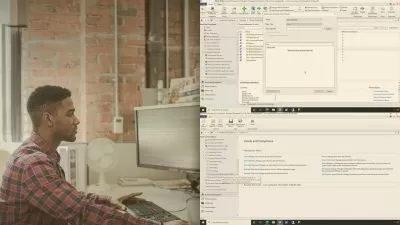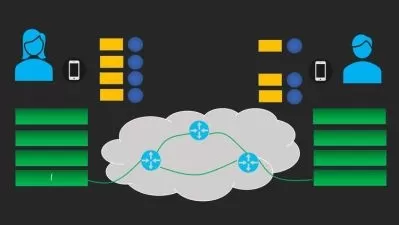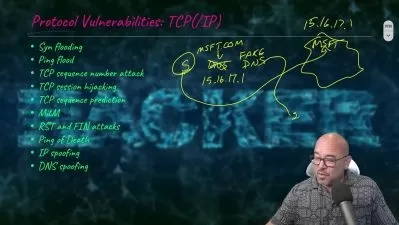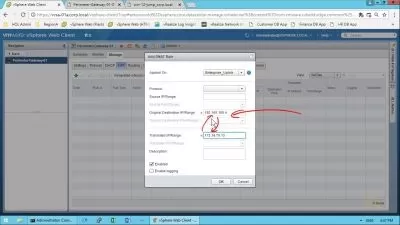PCNSA Online Training
Keith Barker
17:32:58
Description
This intermediate Palo Alto PCNSA training prepares learners to take the PCNSA exam, which is the one required exam to earn the Palo Alto Networks Certified Network Security Administrator (PCNSA) certification.
The Palo Alto Networks Certified Network Security Administrator certification isn’t designed just for security professionals — customers, value-add resellers, pre-sale systems engineers, system integrators, and system administrators can get a lot from it too. The PCNSA focuses on installing, maintaining and managing Palo Alto Networks next-generation firewalls to protect networks — so no matter your role or responsibilities, with our PCNSA training, you’ll understand how to use Palo Alto’s cutting edge tools to protect networks from emerging cyber threats. If you need insight into navigating firewalls on Palo Alto’s security operating system, an extensive background in digital security isn’t a prerequisite for our PCNSA training, and afterwards you’ll be a more capable user of any network secured by Palo Alto.
More details
For anyone who manages security professionals, this PCNSA training can be used for PCNSA exam prep, on-boarding new security professionals, or as part of a team training plan.
PCNSA: What You Need to Know
This Palo Alto Networks Certified Network Security Administrator (PCNSA) training maps to the PCNSA Palo Alto software and appliances exam objectives, and covers topics such as:
- Identifying components of the Palo Alto Networks Security Operating Platform
- Automating tasks, reducing response time, improving security effectiveness
- Configuring firewall management interfaces and managing firewall configurations
- Updating and upkeeping networks and firewalls
- Configuring virtual routers
- Managing application-based security policy rules
- Deploying security profiles
Who Should Take PCNSA Training?
This PCNSA training is considered administrator-level Palo Alto training, which means it was designed for security professionals. This Palo Alto software and appliances skills course is designed for security professionals with three to five years of experience with security appliances.
New or aspiring security professionals. If you’re a new security professional looking to set yourself apart, this PCNSA training will give you advanced familiarity with next-generation firewall use and maintenance. If you already hold your PCCSA, this training can prepare you to earn your PCNSA — even if you don’t, you can still take this training to learn all best practices in advanced network protection.
Experienced security professionals. Operating and maintaining Palo Alto Networks’ next-generation firewalls is an important role for any enterprise with a sizable network footprint. To do that, those enterprises rely on a PCNSA — a certified expert in keeping users safe, applications secure and policies relevant with next-generation firewalls. With this training, you’ll be familiar with and ready for all of their features, tools and resources.
User Reviews
Rating
Keith Barker
Instructor's CoursesThe best part of being a trainer is making a difference in the life of a student. When a motivated learner and the correct training meet at the right time, the results are amazing.
Keith Barker discovered a love for computers and networking in 1984 and began his IT career in 1985 at Electronic Data Systems (EDS). He has worked with companies including Paramount Pictures, Blue Cross, and several government agencies. Keith loves to teach and spends most of his time creating fun and useful videos for CBT Nuggets.
Certifications: Cisco CCIE (2x), CISSP, Network+, Security+, VMware, Palo Alto, Check Point
Areas of expertise: Networking and Security

CBT Nuggets
View courses CBT Nuggets- language english
- Training sessions 144
- duration 17:32:58
- English subtitles has
- Release Date 2023/07/01















